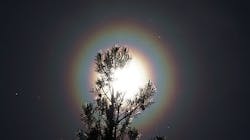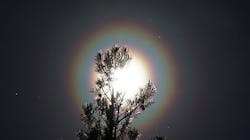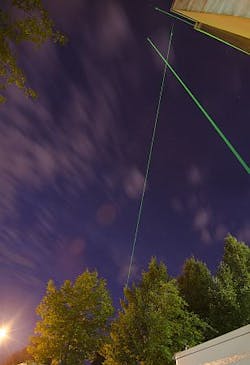Polarization lidar measurements could improve pollen forecasting
An international team of researchers from the University of Hertfordshire (Hatfield, England) and the Gwangju Institute of Science and Technology (GIST; Gwangju; South Korea) turned to a laser measurement method to measure the properties and spread of airborne pollen, hoping to improve its forecasting for allergy sufferers.
Related: Crowd-sourced measurements offer a unique view of pollution's effects
Related: Real-time Raman-based pollen identification promises help for allergy sufferers
Pollen is easily spread through the air and its impact on human health may increase due to climate change. The physical and optical properties of pollen also determine how much sunlight arrives on the Earthâs surfaceâand the amount of sunlight reaching the surface has a major influence on our planetâs temperature.
Using polarization light detection and ranging (lidar), the research team measured some different optical properties of airborne pollen for the first time, including the light-extinction coefficient that enables the determination of the optical depth of the atmosphere. This optical depth determines the amount of sunlight falling onto Earthâs surface, and hence directly influences Earthâs temperature.
Operating in a similar way to radar, polarization lidar measures the difference in time between sending a laser pulse up into the sky and receiving the back-reflected laser pulse, allowing the distance between the instrument and the reflecting object (pollution particles, in this case) to be computed.
âWe found that pollen particles from trees are distributed in the lower part of the atmosphere in cities. This is caused by small air convections, air updrafts, and downdraftsâand good weather conditions, such as high temperatures and low relative humidity, also contribute to this,â explains Dr. Detlef Mueller of the University of Hertfordshireâs School of Physics, Astronomy and Mathematics, who previously served at the Leibniz Institute of Tropospheric Research (TROPOS; Leipzig, Germany).
âDust is known to act as carrier of bacteria and fungi as well as pollen," Mueller continues. "We observed an increase in the number of people who were hospitalized after large dust outbreaks over South Korea, where we were taking the measurements. They suffered from breathing problems, eye inflammations, and other strong allergic reactions. And we have noted similar conditions around the world, such as in the Sahel Zone in Africa, where cases of meningitis may have been caused by bacteria carried by dust.â
Full details of the study appear in the journal Atmospheric Environment; for more information, please visit http://dx.doi.org/10.1016/j.atmosenv.2012.12.018.
-----
Follow us on Twitter, 'like' us on Facebook, and join our group on LinkedIn
Subscribe now to BioOptics World magazine; it's free!


